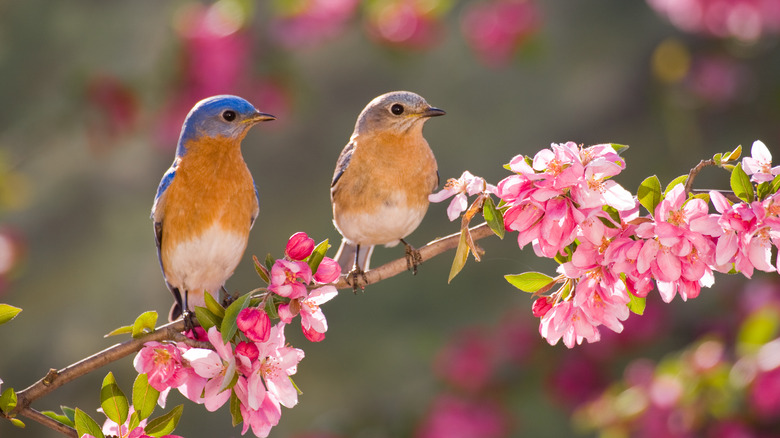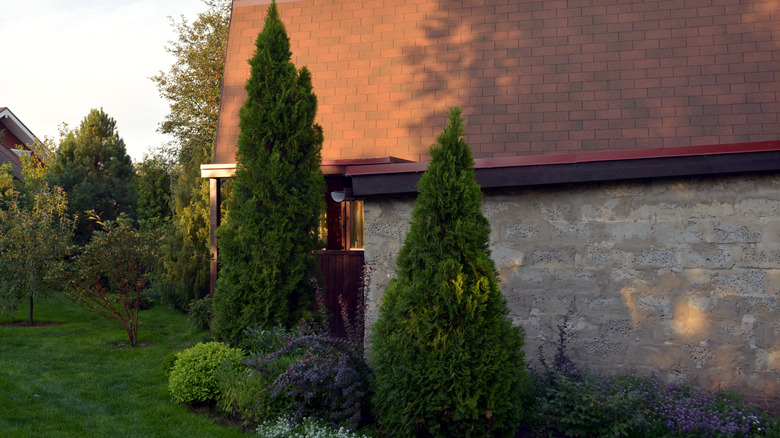The Martha Stewart-Approved Tree That'll Add Fragrance & Attract Birds To Your Yard
Renowned lifestyle icon Martha Stewart recently took to Instagram to share her love for American arborvitae trees (Thuja Occidentals). For framing her winter house's living maze, she is growing cultivars like Technito arborvitae (T. Occidentals 'BailJohn') and Lemon Burst arborvitae (T. Occidentals 'Rutthu3'). While not all of us have the space or time to design a green labyrinth, we can certainly appreciate having another option for evergreen hedges that provide privacy in winter. Native to the east and north-central parts of the U.S., American arborvitae trees are 40-foot-tall conifers that render year-round interest with their dense, 10-foot-wide canopies. Growing them is a nifty way to spice up the landscape — aromatically, if their heady popularity in the perfume industry is any indication. Though, some would argue that the biggest draw lies in their ability to support wildlife, particularly birds.
If you've paid attention to birdscaping tips to turn your yard and garden into a bird haven, you would know it requires a heady mix of shrubs and trees that offer food, harbor, and nesting areas. American arborvitae trees fit right into the picture because they produce yellow cones (that turn brown when ripe) during summer from which pine siskins extract seeds. They also attract numerous insects, thereby laying down a majestic spread for American redstarts, warblers, hermit thrushes, sparrows, and other insectivorous birds. Better yet, their soft, needled leaves cradle bird homes, both when they're actively nesting and during the winter when they're seeking cold protection.
Growth considerations and caveats for American arborvitae trees
Alternatively called northern white cedar and eastern arborvitae, American arborvitae trees are some of the easiest, low-maintenance trees that you will want in your landscaping. They can do without pruning and fertilization when sited in favorable conditions, maintaining their distinct columnar form for birds to take cover in. They're tolerant of most soil conditions, including lean levels, poor fertility, and alkalinity. More good news? There are over 120 cultivars available in varying forms (pyramidal and globular), heights, and foliage colors that can be row-planted for screens or as hedges.
However, to indulge your bird watching hobby, stick to cultivars that closely match the straight species. In other words, your trees should support dense crowns, or birds won't nest inside them. This is also why American arborvitae trees are planted in full sun exposure, as they begin losing their density in shade. However, some afternoon protection will be necessary during the sultry southern summers (zone 7 and lower). Although these sentinels show poor endurance against cold winds and ice, they still make decent windbreaks for your overwintering bird feeders.
Also, note that arborvitae trees won't set their seed-containing cones until they're 10 years old. Plus, even when they do, it'll entail a two-year interval, making them decent food sources at best for chickadees, nuthatches, grosbeaks, and squirrels. Alas, deer find their foliage palatable, so either fence the trees or grow deer-resistant cultivars like 'Green Giant.' Keep your eyes peeled for bagworms.

